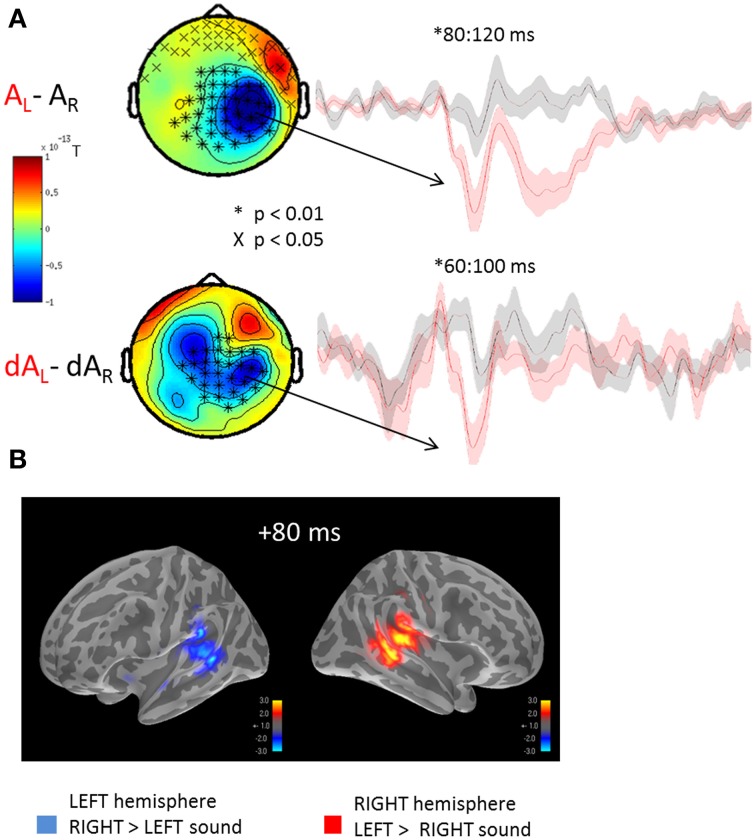Figure 2.
Mean auditory fields and source estimates evoked by the presentation of lateralized sounds irrespective of eye position. (A) Auditory responses evoked by the presentation of a left (red trace) or right (black trace) sound irrespective of eye positions were contrasted and submitted to cluster analysis for both STD (top row, AL-AR) and DEV trials (bottom row, dAL-dAR). The topographies (left panels) highlight the significant sensor clusters found in the contrasts, namely here: a left sound evoked a larger response in the right hemispheric sensors. Two observations can be made: whereas a left sound significantly increased the amplitude of the auditory evoked response in the right hemisphere, a right sound did not significantly increase the response in the left hemisphere. This assymetry was captured in source space as well cf. (B). Although a similar topography can be seen in STD and DEV trials, additional sources appear to contribute the differential responses in DEV trials. The later difference (~200 ms) observed in the STD trials was not observed in the DEV trials. Additionally, the significant clusters in DEV trials occured slightly earlier than in the STD trials. (B) Grand average source estimates (dSPM) contrasting the auditory evoked responses obtained to the presentation of a left and right STD sound (AL-AR) irrespective of eye position (i.e., source-reconstructed contrast from Figure 2A, first row). Consistent with the clusters of evoked responses observed in sensor space, source estimates at a latency of ~80 ms were significantly larger in the right auditory cortices when the sound was presented to the left; conversely, an increased amplitude of the m100 response was observed in the left auditory cortices to the presentation of a right lateralized sound although not significant.

